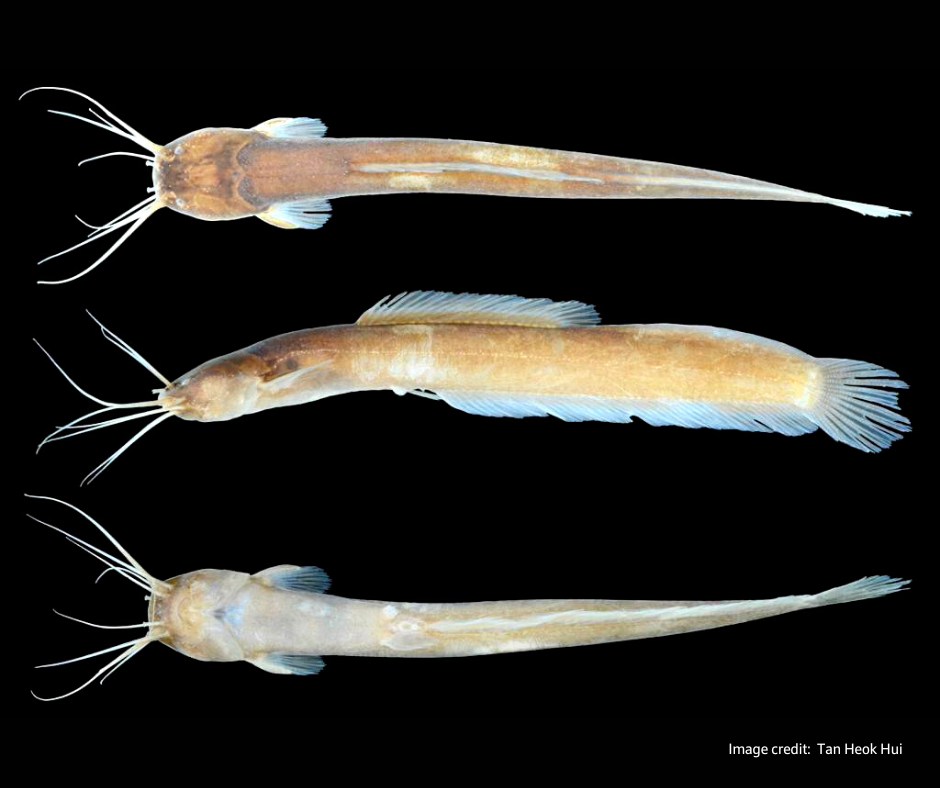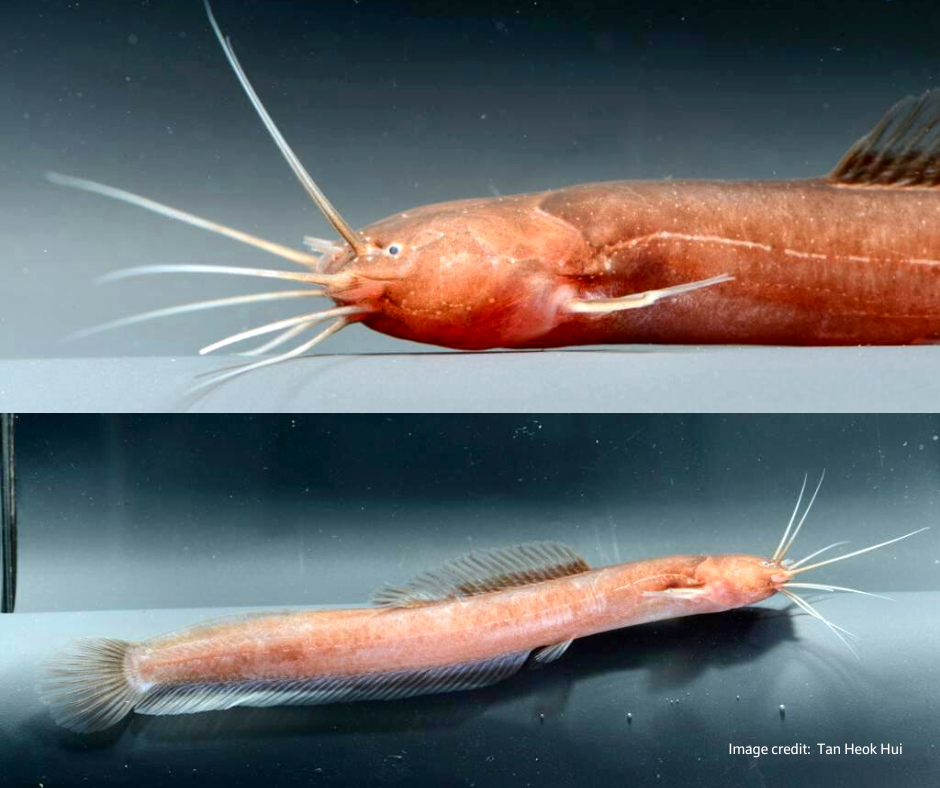Follow us on Telegram for the latest updates: https://t.me/mothershipsg
A species of air-breathing catfish has been recorded for the first time in Singapore, after it was sighted in the swampy area of the Central Catchment Nature Reserve (CCNR).
The record of the discovery was published in the Raffles Bulletin of Zoology on Mar. 3, in a collaborative effort by the Lee Kong Chian Natural History Museum (LKCNHM) and National Parks Board (NParks).
 Image by Tan Heok Hui via LKCNHM / FB
Image by Tan Heok Hui via LKCNHM / FB
The sighting
In a Facebook post, LKCNHM announced that the catfish (Encheloclarias kelioides), was first sighted during a field survey in the streams at Nee Soon Swamp Forest in the CCNR, by Tan Zhi Wan, a research assistant at LKCNHM, and Elysia Toh, a Research Associate at Yale-NUS.
They sent photos of the catfish to the museum's ichthyologist, Tan Heok Hui.
Tan was "taken by surprise" as it was previously thought that this catfish did not exist in Singapore.
The species is more commonly found in peat swamps in neighbouring Malaysia and Indonesia.
Through this discovery, it is now known to be native to Singapore too.
According to the research paper, E. kelioides belongs to the family Clariidae, a group of catfish which can breathe air.
The largest individual sample was 102.4mm in length, which is a comparatively smaller adult size than other known species of clariid catfish.
 Image by Tan Heok Hui via LKCNHM / FB
Image by Tan Heok Hui via LKCNHM / FB
Importance of Nee Soon Swamp Forest
CCNR is an acidic freshwater swamp habitat, which is ecologically suitable for the catfish, according to LKCNHM.
Nee Soon Swamp Forest is the "last significant fragment" of freshwater swamp forest in Singapore.
Despite extensive efforts of monitoring and sampling to document new species of freshwater fish in this area, the catfish had remained undetected throughout the years.
Thus far, the species has only been recorded at three specific locations within the upper reaches of the freshwater swamp drainage system even with additional sampling efforts at other parts.
The research paper described its distribution in Nee Soon Swamp Forest as "highly restricted".
It is possible the elusive species is more widespread within the swamp forest, but further sampling efforts are needed to determine its distribution.
The catfish is well-protected as the CCNR is protected from developments and has limited public access, which could help ensure its long-term survival.
As they are acid-water specialists, the discovery highlights the importance of Nee Soon Swamp Forest and of conserving this natural habitat.
The researchers recommended changing the species' International Union for Conservation of Nature (IUCN)'s Red List assessment status to "Critically Endangered", with its national conservation status in Singapore to reflect the same.
Related stories
Images via Lee Kong Chian Natural History Museum/ FB
If you like what you read, follow us on Facebook, Instagram, Twitter and Telegram to get the latest updates.
